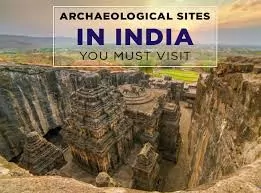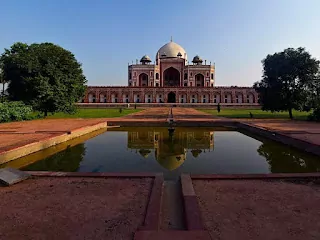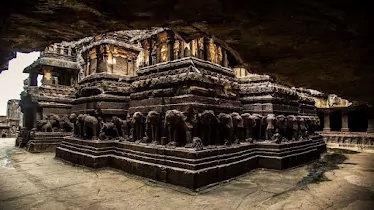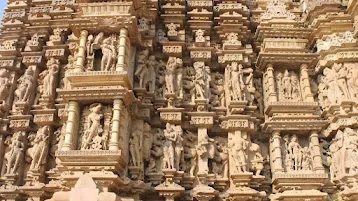Archeological Wonders Of Ancient India
Archeological Wonders Of Ancient India. Go all over , be anyone, do ant one thing , you cannot escape the pride that you feel at all someone notice the word ‘India’. If culture and devise were a funds , we must be the richest state in world.

Come to think of it, we were! ‘Sone ki Chidiya’ (The Golden Sparrow) as it was lovingly and usually known as charmed the attention of colonists and conquerors from all over the world and metamorphosed between centuries of wars, conquests and peace keeping eras! across all of these, one thing that has remained constant is the planning and artistic prowess of the masters. 12 Archeological Wonders Of Ancient India. Ministry of Tourism
The ancient mysteries of the Ajanta caves

Carved over a time of several stage , the mystery of Ajanta Caves might never have been expose had it not been for a exchange pursuit of a tiger by the British Officer John Smith in the year 1819! As old as 200 BCE, the caves are location in Aurangabad district of Maharashtra. Over the legion of yearly they fell into disuse and a forest grew over and all over them. Carved over many many yearly by distant maker , they are trust to have been made a refuge for the Buddhist monks during the rains. Some go as far as to say that they were trace to the blue . Yatra Best Flights Hotels Bus IRCTC Trains
With numerous carvings that describe the life and periods of the eras, they are like a window that one can peek between into the superb past of India. 12 Archeological Wonders Of Ancient India.
The monument to love that inspired the Taj Mahal-The Humayun Tomb

Pick up any form of literature and you will be notice that ‘Taj Mahal’ has forever been cited as the all enduring monument of the love of a king for a queen. But, there was one tomb ahead that, that a grieving widow built for the love and dedication that she felt towards her husband; The Humanity Tomb. The pioneering sample of Mughal planning , its glorious blend of Persian and Indian planning forms was to set a prelude to an era that was to be grace by the majesty of Mughal planning . 12 Archeological Wonders Of Ancient India.
Rani ki Vav heritage site of India
Kedarnath

Kedarnath Temple Front Side કેદારનાથ 360 Degree View – Click Here
The lasting testament to the grandeur of the Vijayanagara Empire- Hampi

The landscape of Hampi in Karnataka is replete with the flows of the great Tungabhadra River and rocky outcrops that form the major part of landscape. Among st these image settings lie a category of hence that bear a living testament to the grandeur of the last empire of India- the Vijayanagar a domain . showing an innate sense of Indian craftsmanship, the group of temples is flanked by chariot shape , markets and even a courtesans’ walkway. Imagine the prosperity of the empire that has stables for elephants! The Vitthala Temple amongst these is the finest sample of ornate planning with gopurams, halls, sanctum sanctorium and sabha mandapas. 12 Archeological Wonders Of Ancient India.
The temple where Lord Buddha gained enlightenment- Mahabodhi Temples

India has had a rich and varied tradition of knowledge and teaching and the standing doyenne of it is Lord Buddha. A prince who left all the worldly content behind to impart peace and end the suffering of this world, Siddhartha came to do penance below a Peephole tree, a tree that must later assume the name of the Bodhi tree and the region Bodhgaya.
In the sanctified town of Gaya, 96 km from Patna in Bihar, lies a holy system that marks the path that the great ascetic took to gain divine insight and where Prince Siddhartha became Buddha. The temple was first make by the great emperor Ashoka, in 250 BC and following work was carried out by the rulers of Gupta dynasty, it is one of the earliest and pioneering example of strong brick architecture that was to direct the Indian making styles for annual to come. 12 Archeological Wonders Of Ancient India.
An ode to Sun God, where even stones speak up in prayer- Konark Temple

No text of design in India is total without the hint up of Sun Temple at Konark, the brand of the city itself is an elegy to the Sun God, Kona (Corner) and Arka (Sun). On the formation coasts of Bay of Bengal rests this edifice that remember the work of the masters of old times. The temple has an elaborate and intricate mammoth image that depicts the chariot of the Sun God replete with 24 carved wheels, each of them 3 m in diameter, pulled by seven horses and guarded by two lions at the entrance that bravely crush elephants. 12 Archeological Wonders Of Ancient India.
A eulogy to undying love set in white marble- The Taj Mahal

Ask anyone, any man or woman all over the icon they associate with India, and their answers would most likely allude to the Taj Mahal. Built by the Mughal king Shah Jahan, it is one of the most grandiose gestures of love to ever be tskr place on the face of world . As divinely said by the major poet, Rabindranath Tagore, “The Taj Mahal rises above the banks of the river like a solitary tear dangle on the cheek of time.”
Inspite of the multitude of tourists that visit it, the declarations of love that it has witnessed and untold sample that it has set, there is a sense of melancholy as one approaches the cross , a sense of pain of a lover sever from his wife by death. 12 Archeological Wonders Of Ancient India.
A land surrounded by misfortune, beautified by architecture- Champaner- Pavagadh Archaeological Park

state to the other carom on the list, not many know about the Champaner- Pavagadh Archaeological Park, inhabited since the Copper Age, it carry on cut off from the rest of the world until 400 A.D. for all that an ancient prehistoric settlement ordain by the presence of Goddess Kali herself, the town that started off with a thriving export of silk and other for most artefacts, slowly fell into desertion and neglect behind the Mughal emperor Humayun encroach its re even so , the architecture here bears a silent testimony to the era bygone and showing a fine blend of Indo- Muslim architecture, resulting in total and exchange Islamic pre-Mughal city.
The park actually comprises of no less than 16 heritage structures than involve a major mosque, a hallowed hill temple of Goddess Kali, a helical step-well, many other mosques, a city gate, a kabutarkhana and many other such standing edifices of stunning and enduring architecture.12 Archeological Wonders Of Ancient India.
A portal to the historic and prehistoric era- Bhimbetka Shelters

The Bhimbetka shelters, present a stunning allusion to what we now know to be the Mesolithic era, the middle stone age. At the foothills of the Vindhyan mountains, in the central state of Madhya Pradesh in India. uncover at late as 1957, the cave paintings represent a close interaction between man and nature. So advanced are the for most of the paintings that the life of the men all over the plains, that belonged to the copper age can still be clearly seen!
A stunning 243 shelters have been identified in the Bhimbetka category and a further 178 in the Lakha Juar Group, stretching the length of the shelters to more than 10 km! The landscape and the fauna abutting the rock shelters is called Ratapani wildlife sanctuary in and that the evidence of the trees and animals depicted in the paintings inside the shelter can still be found. Earliest backing to the tradition of dance can as well as be found here, such is the aesthetic value of these paintings that their existence is ‘timeless’!
The integral land of three beliefs, The Ellora Caves

The Ellora caves is a sculpture’s beautiful blended expression of three major Indian regions: Buddhism, Brahmanism and Jainism. There is something beautiful all over this location that takes you to a travel in the past where all these creed born and grew at once . The 34 abbes and temples are carved and dug all at once on the wall of a huge basalt cliff in Maharashtra. These splendors of art is a dazzling union of, when art meets religion.
The twelve caves of the Buddhist group speaks about the favor of this calm creed , Buddhism. The ‘Cavern of the Ten Avatars’ is a majestic art piece constructed below the reign of Krishna I. The origin of Jain category is well return by the haven carved by the Digambra sect of this pure religion.
These gems of art are the immortal legends of the vast rock-cut planning in India. The elegance of Dravidian Sikhara, and that is a flat roofed madapa place over sixteen pillar, the gigantic Ravana figure return the strength of this villainous legend as the model here shows him lifting Mt Kailasha is an epitome of the ancient Indian art.
Where the walls sing and sculptures dance, the Chola temples

The dazzling Chola temples are living tales of the vast empire that Cholas began in Thanjavur. These notable temples built during the reign of Rajaraja were the epitome of the vast religious inclination of these rulers as the inscriptions and the record on the wall sing all over their opulent rule. This temple in the ancient time was note a mere religious center but a full functional company establishment and that was served and maintained by a permanent staff of several hundred priests, 400 devadasi and 57 musicians.
The misrepresented temples of Khajuraho

Famous all over the world as monuments that are an ode to sensuality, the Khajuraho temples have only about 10% of sensual sculptures that are in balance with the non-sensual photo . The Chandela dynasty, below whose rule the temples were constructed, firmly truest in the Tantric school of thought. The mainstay of and that , is the established perfect balance between the male and female.
Both Tantric and Hindu School of believe that none can exist without the other, while the male principle holds the form and potential, female counterpart holds energy! Such progressive views on union and interaction between the two existed even then and begs us to quiz our own misconstrued views of today!
A rock cut sonnet to the great war of Mahabharata, Mahabalipuram

It is a widely accepted belief that the great war fought between the Kauravas and the Pandavas, at Kurukshetra, is instrumental in shaping the history and geography of the Indian subcontinent as we know today. The temples of Mahabalipuram demonstrate exactly that, in the rock cut carvings of the major temple planning , one can clearly see the scenes from the great epic.
The planning demonstrates a clear allusion to the sectarianism that had started during the period as distant areas were assigned to distant Gods. The travels of Marco Polo as well as describe the Seven Pagodas of Mahabalipuram that belonged to the original structure built in the time when the city was a thriving merchant port. Out of these seven just one has survived in the form of a beautiful shore temple!